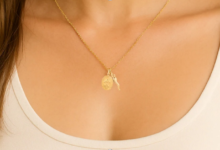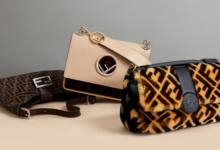The Rise of Ethical Fashion: Why It’s the Future of Style

In recent years, the fashion industry has experienced a profound transformation. As consumer awareness grows, people are becoming more conscious of the social, environmental, and ethical implications of their purchasing choices. This has given rise to a powerful movement: ethical fashion. No longer a niche concern, ethical fashion has entered the mainstream, setting the tone for the future of style. This article delves into the core principles of ethical fashion, its importance, and why it is increasingly seen as the future of the industry.
Understanding Ethical Fashion
Ethical fashion refers to the design, production, and distribution of clothing in ways that minimize harm to the environment and ensure fair treatment of workers involved in the process. It is a broad term that encompasses several key concepts including sustainability, fair trade, and cruelty-free practices. The ethical fashion movement is about prioritizing people and the planet over profit. This means taking into consideration every stage of the fashion supply chain, from the raw materials used to the treatment of workers in factories.
At its core, ethical fashion is a response to the negative impacts of fast fashion—a model where clothes are produced quickly, cheaply, and often under exploitative conditions. Ethical fashion advocates for a more thoughtful approach, focusing on quality over quantity and longevity over disposable trends.
The Environmental Impact of Fast Fashion
One of the driving forces behind the rise of ethical fashion is the growing awareness of the environmental damage caused by traditional fashion practices. Fast fashion, characterized by mass production of inexpensive clothing, is a significant contributor to pollution. The textile industry is the second-largest polluter in the world, right after the oil industry. It consumes vast amounts of water, uses toxic chemicals, and generates colossal waste.
Consider this: it takes approximately 2,700 liters of water to produce just one cotton custom t shirt. That’s enough water for one person to drink for 2.5 years! Furthermore, most fast fashion garments are made from synthetic materials such as polyester, which do not biodegrade and contribute to the plastic pollution crisis. The rise of ethical fashion challenges this by promoting the use of sustainable fabrics, such as organic cotton, bamboo, and recycled materials, that have a significantly lower environmental footprint.
The Human Cost of Cheap Clothes
The human cost of fast fashion is equally alarming. Many fast fashion brands outsource their production to countries where labor laws are weak or poorly enforced. This often leads to sweatshop conditions where workers, many of whom are women and children, are paid meager wages and work long hours in unsafe environments. The tragic collapse of the Rana Plaza factory in Bangladesh in 2013, which killed over 1,100 garment workers, brought global attention to these issues and fueled the demand for greater accountability in the fashion industry.
Ethical fashion seeks to address these human rights violations by advocating for fair trade practices. This ensures that garment workers receive fair wages, work in safe conditions, and have access to social protections. Brands that commit to ethical fashion often work closely with their suppliers, building long-term relationships and supporting the development of sustainable livelihoods for workers.
Sustainable Materials and Production Techniques
Sustainable materials and production methods are at the heart of ethical fashion. Consumers are increasingly looking for clothing made from eco-friendly materials such as organic cotton, hemp, and bamboo. These materials are grown without harmful pesticides and use less water compared to conventional cotton.
Recycled fabrics are also gaining popularity. Many ethical brands now use fabrics made from recycled plastic bottles or repurpose old garments into new ones. This not only reduces waste but also lowers the demand for virgin materials, which are resource-intensive to produce.
Additionally, ethical fashion brands are exploring innovative production techniques that reduce their environmental impact. For example, waterless dyeing technology, which uses air instead of water to apply dye to fabrics, is being adopted by forward-thinking designers. Similarly, 3D knitting technology, which produces garments with zero waste, is becoming a game-changer in sustainable fashion production.
Slow Fashion: The Antithesis of Fast Fashion
The slow fashion movement is closely aligned with the principles of ethical fashion. Unlike fast fashion, which emphasizes speed and low cost, slow fashion values quality, craftsmanship, and longevity. It encourages consumers to buy less but buy better—investing in timeless pieces that are made to last rather than trendy items that will be discarded after a few wears.
Slow fashion also promotes a more thoughtful approach to shopping. It encourages consumers to consider the origins of their clothing, the materials used, and the impact of their purchases on the environment and society. By choosing slow fashion, individuals can make a positive difference in the world while also cultivating a more sustainable wardrobe.
The Role of Transparency in Ethical Fashion
Transparency is a cornerstone of the ethical fashion movement. In the past, consumers had little knowledge of how their clothes were made or the conditions under which they were produced. However, ethical fashion brands are challenging this opacity by offering full transparency about their supply chains.
Brands that prioritize transparency provide detailed information about their production processes, the materials they use, and the working conditions of their employees. This allows consumers to make informed decisions and hold brands accountable for their actions. The growing demand for transparency is driving many fashion companies to rethink their practices and adopt more ethical and sustainable approaches.
The Rise of Secondhand and Vintage Fashion
Another important aspect of ethical fashion is the increasing popularity of secondhand and vintage clothing. Thrift stores, consignment shops, and online platforms like Depop and ThredUp are making it easier than ever for consumers to buy and sell pre-loved clothing. This shift towards circular fashion—where garments are reused, recycled, or repurposed rather than discarded—helps reduce waste and extend the life of clothing.
Buying secondhand is not only eco-friendly but also budget-friendly. It allows consumers to find unique, high-quality items at a fraction of the cost of new clothing. Moreover, the secondhand market is no longer limited to budget-conscious shoppers; it has become a trendy, mainstream option for those seeking to reduce their environmental impact without sacrificing style.
Ethical Fashion and Consumer Power
The rise of ethical fashion has been largely driven by consumers who are demanding more from the brands they support. People are becoming more conscious of the impact of their choices and are using their purchasing power to support companies that align with their values. This shift in consumer behavior has not gone unnoticed by fashion brands, many of which are now making efforts to improve their ethical and sustainable credentials.
Brands like Patagonia, Everlane, and Stella McCartney are leading the way in the ethical fashion movement by implementing sustainable practices and advocating for social responsibility. These companies are proving that it is possible to be both profitable and ethical, setting a new standard for the fashion industry.
The Role of Technology in Ethical Fashion
Technology is playing a significant role in the advancement of ethical fashion. From blockchain technology that ensures transparency in supply chains to digital platforms that enable the resale of secondhand clothing, technological innovations are helping to drive the ethical fashion movement forward.
For example, blockchain technology allows consumers to trace the journey of a garment from its raw materials to the finished product. This level of transparency helps ensure that brands are adhering to ethical practices and allows consumers to make informed decisions about the products they buy.
Moreover, advancements in fabric technology are leading to the development of new, sustainable materials. Innovations such as lab-grown leather, biodegradable fabrics, and clothes made from algae are pushing the boundaries of what is possible in sustainable fashion.
Why Ethical Fashion is the Future of Style
Ethical fashion is more than just a trend—it’s a movement that is reshaping the entire fashion industry. As awareness of the environmental and social impacts of fashion continues to grow, more consumers are choosing to support ethical brands that prioritize sustainability, transparency, and fairness.
The future of fashion is one where consumers, brands, and designers work together to create a system that is kinder to the planet and its people. By embracing ethical fashion, we can move towards a more sustainable future, where style is not only a reflection of personal taste but also of our collective responsibility to the world around us.
As the industry evolves, it is clear that ethical fashion is not just a passing fad. It is a fundamental shift in the way we think about and engage with fashion. With its emphasis on sustainability, fairness, and transparency, ethical fashion is set to become the new standard in the world of style.
Frequently Asked Questions about Ethical Fashion
1. What is ethical fashion? Ethical fashion refers to clothing and accessories that are produced in a way that minimizes harm to the environment and ensures fair treatment of workers. It focuses on sustainability, transparency, and social responsibility.
2. How does ethical fashion differ from fast fashion? Fast fashion emphasizes speed and low costs, often at the expense of workers and the environment. Ethical fashion, on the other hand, prioritizes quality, sustainability, and fair labor practices, encouraging more thoughtful consumption.
3. Why is transparency important in ethical fashion? Transparency allows consumers to know where and how their clothes are made, ensuring that brands are adhering to ethical practices. It also holds companies accountable for their environmental and social impacts.
4. What materials are considered sustainable in ethical fashion? Sustainable materials include organic cotton, bamboo, hemp, and recycled fabrics. These materials use fewer resources and are less harmful to the environment than conventional textiles like polyester.
5. Is secondhand clothing part of ethical fashion? Yes, buying secondhand clothing is an important aspect of ethical fashion as it reduces waste and extends the life of garments. Thrifting and buying vintage clothing are sustainable alternatives to purchasing new items.
6. How can consumers support ethical fashion? Consumers can support ethical fashion by purchasing from brands that prioritize sustainability, choosing high-quality, long-lasting items, and shopping secondhand. It’s also important to be mindful of the environmental and social impact of one’s wardrobe choices.





